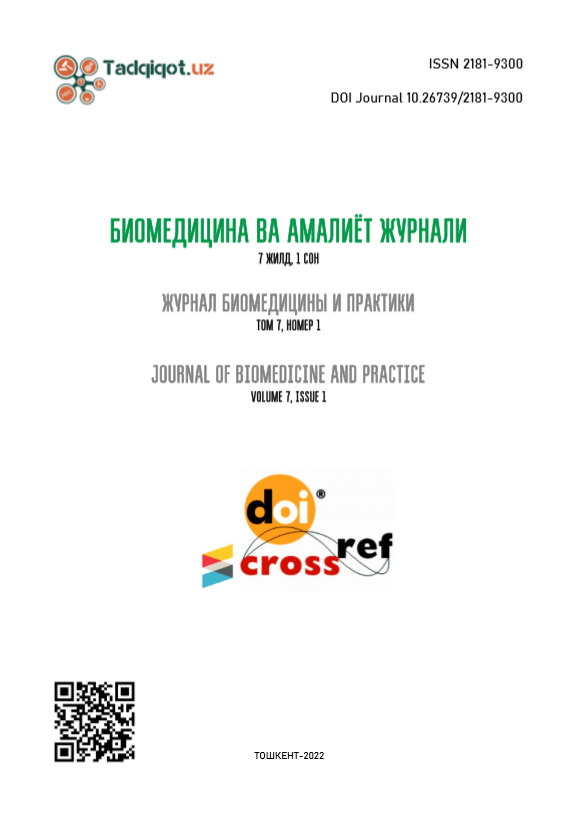FORENSIC EVALUATION OF THE IRIDODIAGNOSTIC AUTONOMOUS RING
Keywords:
iridodiagnostic methods, forensic medicine, autonomous ring, irisAbstract
The aim of the study: Forensic evaluation of iridodiagnostic autonomous ring in the corpses of the deceased died prematurely as a result of various diseases.
Materials and methods : We used iridodiagnostic methods of investigation, as well as forensic chemical, medical and forensic and forensic histological methods. The material used was the corpses of 42 persons who died suddenly from various chronic pathologies. Among the deceased males were more common, 28 of them were males and 14 females. Age category of the deceased ranged from 30 to 75 years.
Results of the study showed that iris serrated form was 3.7%, retracted form - 24% and elongated form - 32% of deceased persons died suddenly of various diseases. A number of radial fissures and local 'outliers' were identified in our studies, mainly 1,2,5 and 6 forms of radial iris clefts were found.
Conclusions: In forensic medical examination in determining the main cause of sudden death, iridodiagnostic methods are one of the main diagnostic methods. In our observations, there were "slackened" autonomous rings with characteristic indistinct and pigmented borders. These rings lost their typically linear appearance and turned into wide, raised above the surrounding stroma bands.
References
Воробьёва О.В., Ласточкин А.В. Патоморфологические изменения в органах при COVID-19. Инфекция и иммунитет. 2020г., 10(3); 587-590.
Brites D., Vaz, A.R. Microglia centered pathogenesis in ALS: insights in cell interconnectivity.// Front. Cell. Neurosci. - 2014. №8. – Р.117.
Colonna M., Butovsky O. Microglia function in the central nervous system during health and neurodegeneration. // Annu. Rev. Immunol. - 2017. - №35 – Р. 441–468.
Cooke R.A., Stewart B. Colour Atlas of Anatomical Pathology. – Churchill Livingstone. – 2004. – 300 p.
Ilkhomovna, K. M., Eriyigitovich, I. S., &Kadyrovich, K. N. (2020). Morphological Features Of Microvascular Tissue Of The Brain At Hemorrhagic Stroke. The American Journal of Medical Sciences and Pharmaceutical Research, 2(10), 53-59.
Kamalova M. I., Islamov Sh. E., Khaydarov N.K.// morphological changes in brain vessels in ischemic stroke. Journal of Biomedicine and Practice 2020, vol. 6, issue 5, pp.280-284
Khaidarov Nodir Kadyrovich, Shomurodov Kahramon Erkinovich, & Kamalova Malika Ilhomovna. (2021). Microscopic Examination Of Postcapillary Cerebral Venues In Hemorrhagic Stroke. The American Journal of Medical Sciences and Pharmaceutical Research, 3(08), 69–73.
Kamalova Мalika Ilkhomovna, Islamov Shavkat Eriyigitovich, Khaidarov Nodir Kadyrovich. Morphological Features Of Microvascular Tissue Of The Brain At Hemorrhagic Stroke. The American Journal of Medical Sciences and Pharmaceutical Research, 2020. 2(10), 53-59
Anttila J.E., Whitaker K.W., Wires E.S., Harvey B.K., Airavaara M. Role of microglia in ischemic focal stroke and recovery: focus on toll-like receptors.//Prog. Neuropsychopharmacol. Biol. Psychiatry. - 2016. - №79(Pt A), - Р.3–14.

